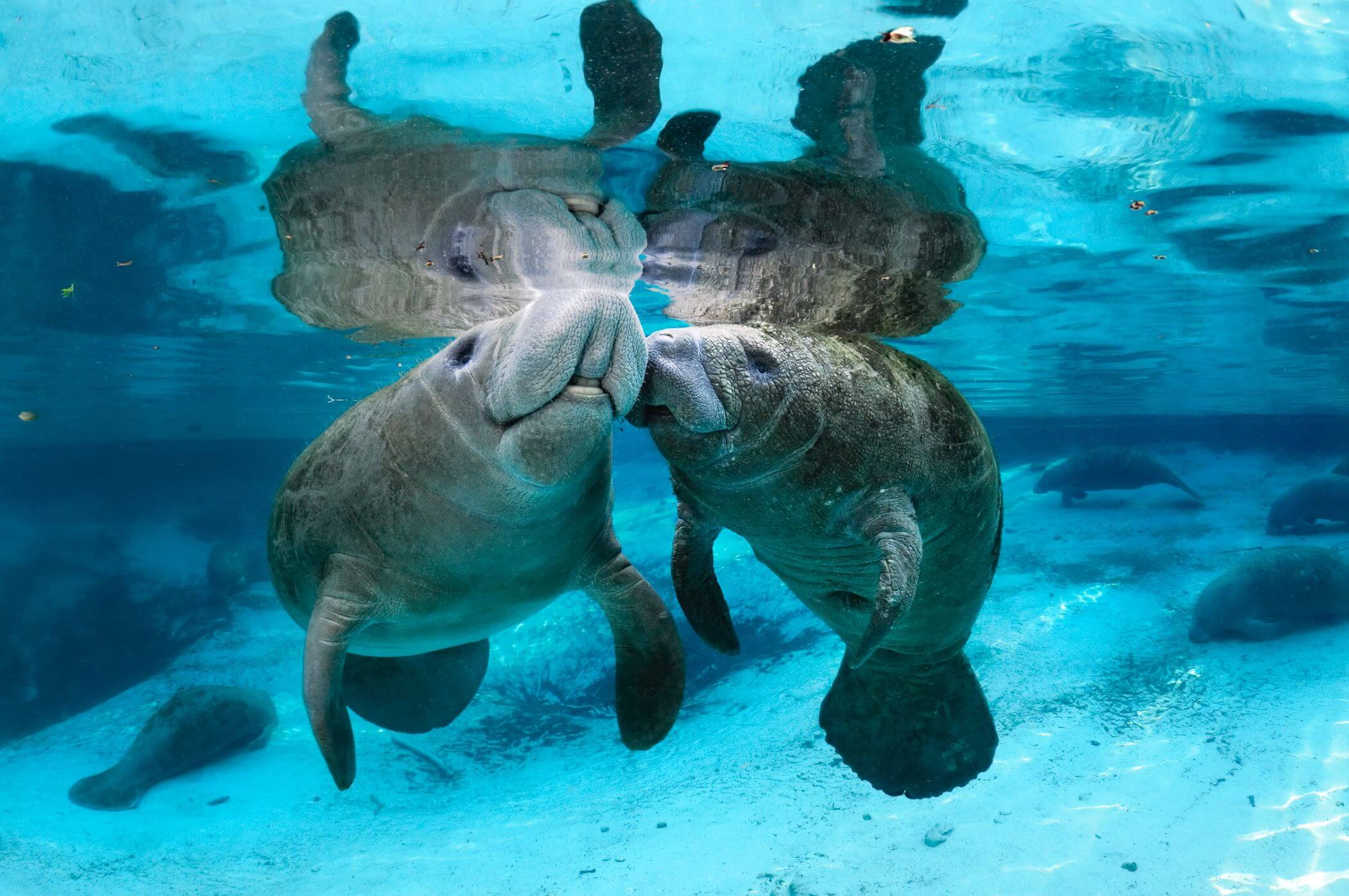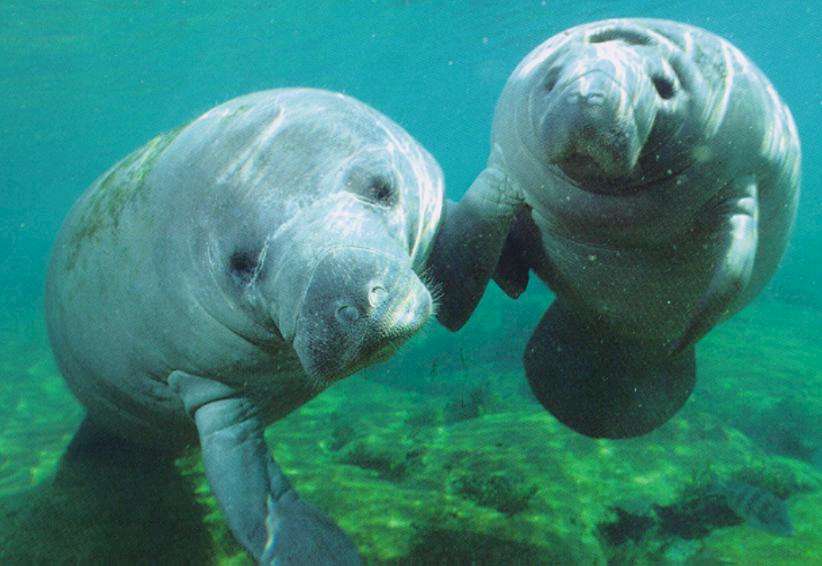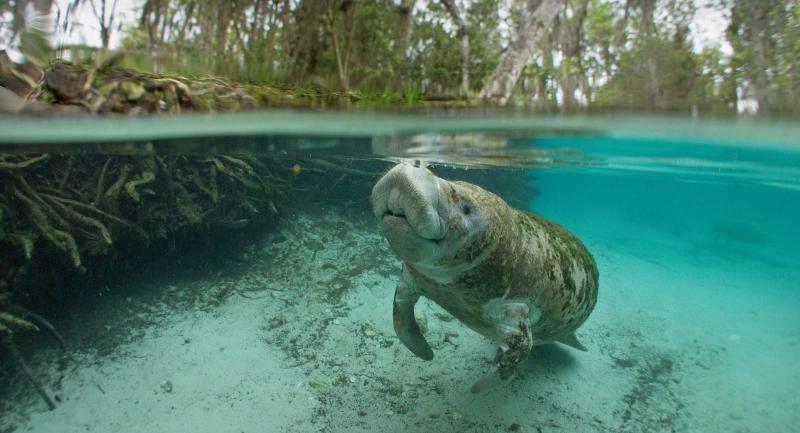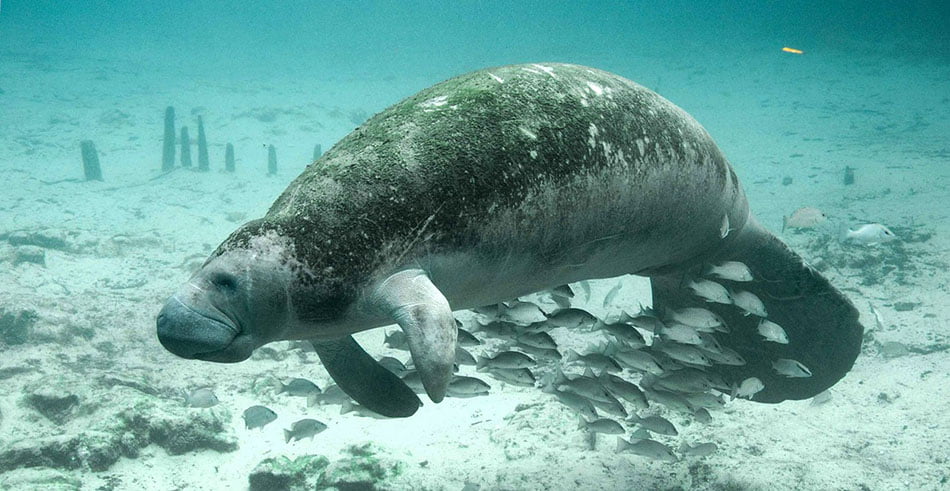Manatees: Gentle Giants of the Sea

Manatees, often referred to as sea cows, are fascinating creatures that roam the waters of the world with a serene grace that belies their immense size. These gentle giants, known for their peaceful demeanor and slow-moving nature, hold a special place in the hearts of many marine enthusiasts and conservationists. Let us dive into the world of manatees and explore their unique characteristics, habitat, and the conservation efforts aimed at protecting these majestic creatures.

Manatees are large aquatic mammals belonging to the order Sirenia, which also includes dugongs and the extinct Steller’s sea cow. They are well adapted to their aquatic lifestyle with rounded bodies tapering to a flat, paddle-shaped tail, making them efficient swimmers. Covered in thick, wrinkled skin, manatees can weigh up to 1,300 kilograms and reach lengths of over 4 meters. Despite their substantial size, they are herbivores, feeding on a diet consisting primarily of aquatic plants.
One of the most distinctive features of manatees is their large, whiskered face adorned with bristly vibrissae, which aid in sensing their surroundings and locating food. Their small eyes and lack of external ears highlight their reliance on other senses, particularly touch and hearing, for navigation and communication.

Manatees inhabit shallow, slow-moving waters in coastal areas, rivers, estuaries, and freshwater springs across the tropics and subtropics. They are commonly found in regions such as the Caribbean, West Africa, the Amazon Basin, and the southeastern United States. Despite their preference for warmer climates, manatees can withstand brief periods of cold water temperatures by seeking refuge in natural springs or industrial warm-water outflows.
These marine mammals are predominantly solitary creatures, though they occasionally gather in small groups for mating or during migration. Their slow metabolism and low-energy lifestyle mean that manatees spend a significant portion of their day resting, either submerged underwater or basking in the sun near the surface.

Despite their placid demeanor, manatees face numerous threats to their survival, primarily due to human activities. Collisions with boats, habitat destruction, pollution, and entanglement in fishing gear pose significant risks to manatee populations worldwide. Additionally, habitat degradation and loss of warm-water refuges due to climate change further exacerbate these challenges.
To mitigate these threats, various conservation efforts are underway to protect manatees and their habitats. Measures such as speed zone regulations in manatee habitats, the establishment of sanctuaries and protected areas, and public awareness campaigns have helped raise awareness about the plight of these gentle giants. Furthermore, research into manatee biology, behavior, and population dynamics informs conservation strategies aimed at ensuring their long-term survival.

Manatees, with their gentle nature and unique adaptations, play a vital role in maintaining the ecological balance of their aquatic habitats. As stewards of the oceans, it is our responsibility to protect these magnificent creatures and ensure their continued existence for generations to come. By supporting conservation initiatives, promoting responsible boating practices, and fostering a deeper appreciation for marine life, we can safeguard the future of manatees and preserve the beauty of our oceans.



